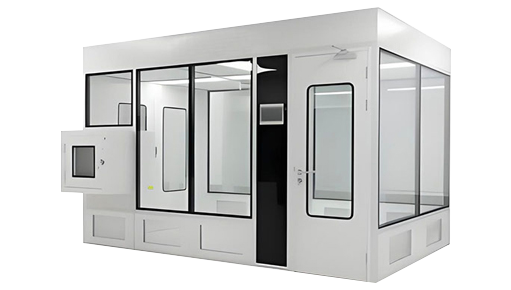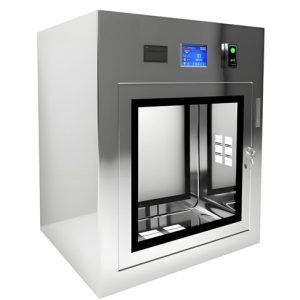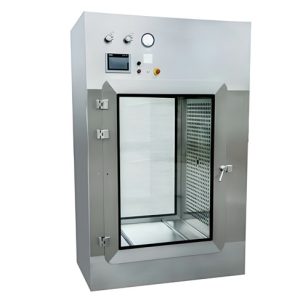Account
-
Safe payment options
We only work with the most secure payment systems.
-
Product return within 30 days
We do our very best to keep our customers happy.
No products in the cart.
You dont have any products in your cart yet, add a few products to experience this experience.
Add $500.00 to cart and get free shipping!
To see and take advantage of all discounted products.
Click HereClean Room Classifications
(ISO 5, ISO 6, ISO 7, ISO 8)
Clean rooms are controlled environments essential for manufacturing processes that require extremely low levels of environmental pollutants. Understanding proper Clean Room Classifications is fundamental to ensuring product quality and regulatory compliance across multiple industries.
The International Organization for Standardization (ISO) developed the ISO 14644-1 standard to provide a global framework for Clean Room Classifications. This guide focuses specifically on ISO 5, ISO 6, ISO 7, and ISO 8 classifications, which represent the most commonly implemented cleanroom standards in industrial applications. Proper implementation of these Clean Room Classifications ensures consistent product quality and regulatory compliance.
Download the cleanroom brochure
The brochure details Deiiang’s engineering capabilities, the Deiiang cleanroom features along with data sheets and case studies.

ISO CLEANROOMS CLASSIFICATION
Various standards have been developed to classify cleanrooms based on their cleanliness levels. The most widely recognized standards include ISO 14644-1 and the now-withdrawn US FED STD 209E. Understanding these Clean Room Classifications is essential for proper facility design and operation.
The ISO 14644-1 standard has become the global benchmark for Clean Room Classifications, replacing most national standards. It classifies cleanrooms from ISO 1 (cleanest) to ISO 9 (least clean) based on the maximum allowable concentrations of airborne particles. Deiiang™ specialists help clients navigate these complex Clean Room Classifications requirements for international compliance.
ISO 5 CLEANROOM
Briefly defines ISO 5 cleanrooms as highly controlled environments with stringent particle limits, essential for sensitive processes requiring ultra-clean conditions.
Air Changes per Hour: High ACH, typically 240-600
Airflow: Usually unidirectional (laminar) airflow
Application Industries:
- Semiconductor Manufacturing
- Pharmaceutical Production (Sterile)
- Medical Device Manufacturing
Deiiang™ designs incorporate energy-efficient fan filter units (FFUs) that maintain consistent airflow while reducing operational costs by up to 30% compared to conventional systems.
ISO 6 CLEANROOM
ISO 6 cleanrooms offer a controlled environment with fewer particles than ISO 5, suitable for applications requiring high cleanliness but less stringent than ISO 5.
Air Changes per Hour: ACH typically ranges from 90-180
Airflow Pattern: Non-unidirectional airflow.
Application Industries :
- Electronics Assembly
- Pharmaceutical Manufacturing (Non-Sterile)
- Optics Manufacturing
- Data Storage
Deiiang™ engineered solutions optimize airflow patterns to minimize turbulence while ensuring complete room air exchange every 20-40 seconds, maintaining particle counts below 35,200 particles/m³ at ≥0.5µm.
ISO 7 CLEANROOM
ISO 7 cleanrooms maintain a defined level of cleanliness, commonly used as a buffer zone or support area for more critical cleanrooms.
Air Changes per Hour: Air changes typically range from 30-60, balancing cleanliness with operational costs.
Airflow Pattern: Non-unidirectional airflow.
Application Industries:
- Pharmaceutical Compounding
- Medical Device Packaging
- Food Processing
- Research Labs
Deiiang™ energy recovery ventilation systems for ISO 7 applications can reduce HVAC operating costs by up to 40% while maintaining compliance with ISO 14644-1 particle limits of 352,000 particles/m³ at ≥0.5µm.
ISO 8 CLEANROOM
ISO 8 cleanrooms provide a controlled environment with the lowest level of cleanliness among ISO cleanroom classifications, often used as entryways or support areas.
Air Changes per Hour : ACH typically ranges from 5-20, providing basic contamination control.
Airflow Pattern : Usually turbulent airflow with basic filtration systems.
Application Industries :
- General Packaging
- Warehousing
- Material Storage
- Preliminary Assembly
Deiiang™ ISO 8 designs focus on operational efficiency with modular components that allow for future upgrades to higher classifications, protecting your investment while meeting current Clean Room Classifications requirements.
Turnkey Design-Build & Partnerships
We can Design-Build-Install and Commission your cleanroom or we can partner with other professionals that your are currently working with!
ISO 14644-1 STANDARD
| ISO Class | ≥0.1 µm | ≥0.2 µm | ≥0.3 | ≥0.5 | ≥1 µm | ≥5 |
|---|---|---|---|---|---|---|
| ISO 1 | 10 | 2 | 1 | – | – | – |
| ISO 2 | 100 | 24 | 10 | 4 | – | – |
| ISO 3 | 1,000 | 237 | 102 | 35 | 8 | – |
| ISO 4 | 10,000 | 2,370 | 1,020 | 352 | 83 | – |
| ISO 5 | 100,000 | 23,700 | 10,200 | 3,520 | 832 | 29 |
| ISO 6 | 1,000,000 | 237,000 | 102,000 | 35,200 | 8,320 | 293 |
| ISO 7 | – | – | – | 352,000 | 83,200 | 2,930 |
| ISO 8 | – | – | – | 3,520,000 | 832,000 | 29,300 |
| ISO 9 | – | – | – | 35,200,000 | 8,320,000 | 293,000 |
Air Changes Per Hour
| ISO Class | Air Changes per Hour (ACH) | Corresponding FS 209E Class |
|---|---|---|
| ISO 1 | Very High (500+) | N/A |
| ISO 2 | Very High (400-500) | N/A |
| ISO 3 | High (300-400) | Class 1 |
| ISO 4 | High (200-300) | Class 10 |
| ISO 5 | 240-600 | Class 100 |
| ISO 6 | 90-180 | Class 1,000 |
| ISO 7 | 30-60 | Class 10,000 |
| ISO 8 | 5-20 | Class 100,000 |
| ISO 9 | <5 | N/A |
Note: The Air Changes per Hour values are typical ranges and can vary based on specific application and cleanroom design. FS 209E is an older standard, but included for reference.





